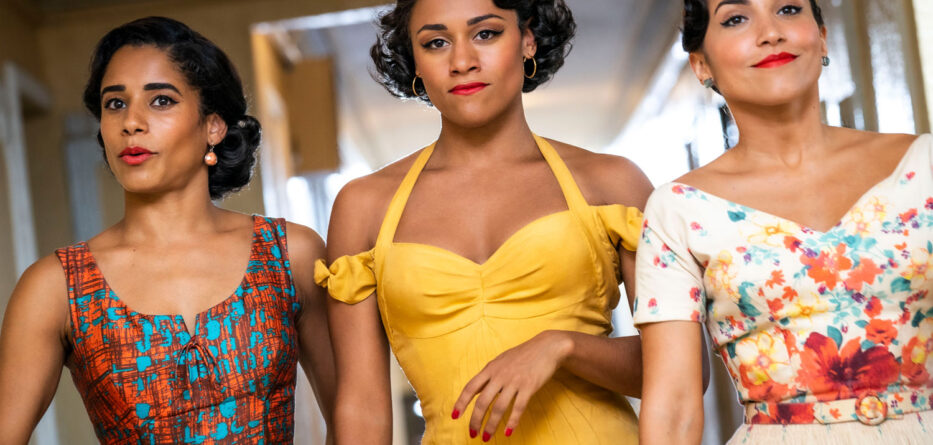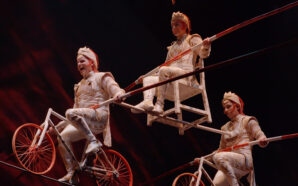Arturo Hilario
El Observador
Steven Spielberg was fifteen years old when the film adaptation of “West Side Story” first arrived at the cinema. In 1975, at age twenty-six, he directed “Jaws”, which was on a whole other spectrum to the musical, yet with that shark thriller he unknowingly set himself up for the success that would one day lead him to be able to take on his own approach to the movie musical based on “Romeo and Juliet”.
Spielberg’s “West Side Story” premieres this week with a new approach to the visuals, story, and most importantly, its approach to diversity.
The basis for the original incarnation was Shakespeare’s “Romeo and Juliet”, but set in the mid-century concrete jungle of New York City amongst disparity, romance and teenage rage. The 1961 film won ten Academy Awards including Best Picture, and continues to be a timeless story, albeit flawed in its portrayal of race and gender roles.
The original film starred Natalie Wood and Richard Beymar in the title roles of María and Tony, two star-crossed teens who were two different worlds in the same neighborhood. Their darkened makeup, Wood played a recent Puerto Rican immigrant with a thick accent, hasn’t stood the test of time, but the music, dance and energy of the movie has never ceased to be at the forefront of pop culture.
New Beginnings
The new film also takes place in the late 1950’s New York City, where rival gangs and rival hearts collide.
One important thing to note, this updated approach has been carefully made with better focusing on getting the reality of diversity of Latin-America as close to authentic as possible, and that is something positive that resonates with all the actresses featured in the following Q&A portion.
We are honored to hear from the women of the cast in this interview, which includes Rita Moreno, Rachel Zegler, Ariana DeBose, Ana Isabelle, who play Valentina, María, Anita, and Rosalía, respectively.
All are Latinas of varying skin tones and backgrounds, but all are part of the diaspora that the original film wasn’t able to approach in terms of depicting reality or equitable representation. The actresses hope that this new film makes that right, and allows even more Latino fans to enjoy the epic that is “West Side Story”. This is especially true of Moreno, who is one of the highlights of the original film, playing the fiery and independent Anita, and now the chief executive producer on this new film.
So without further ado, here is a conversation with the women of “West Side Story”.
To start off, I wanted to know what your initial reaction was to know you were going to be part of this retelling of an iconic piece of American entertainment.
Ariana DeBose
I mean, I was tremendously overwhelmed and excited, but who wouldn’t be, being included. This is Steven Spielberg at the end of the day. Also, these characters, all of them mean so much to so many and to be given the opportunity to reimagine them for a new generation. There are so many young people that have never heard of “West Side Story” in regards to Latinos.
There were certain members of our community who may not have cared for the 1961 depiction of Puertorriqueños. And it was really exciting to know that we were working with a team that had a commitment to doing it the right way this time. There was so much care and research that went into getting this right, including their commitment to representation. You have very different types of Latinas sitting in front of you, and we validate and celebrate [all] of those lived experiences. And so I was genuinely just sort of like, “Holy crap, can I do this?”
Rachel Zegler
Yeah, that’s pretty much what the whole thought process [was] and for me, it was a very long audition process, so I immediately felt relief. Then on the bus ride home, I felt the, “Oh shit” moment come, and I thought, now we have to actually do it and make it.
But we were in such fantastic hands in such historically accurate hands and hands that cared about properly representing our people for this next generation to see without a negative stereotype attached to us, without a stereotype at all, really attached to us being multifaceted, multidimensional individuals, having loving relationships, feeling joy, feeling beautiful and living their lives, having ambitions. It was a really beautiful thing that wasn’t lost on me when we started the process, and certainly now having seen the film a couple of times, it’s not lost on me now.
Ana Isabelle
I can’t even describe my reaction. It was so emotional. There was, like, so many feelings at the same time. Gratitude, a dream come true. Excitement. “I can’t believe I’m making history. Oh, my God. This is happening. I’m going to work with my favorite director. I’m telling this story again with real Latinos!”
There were so many emotions. I started yelling, crying. I called my dad, and I told my whole family in a Thanksgiving dinner. So it was so special. I still get emotional about it.
And for Rita specifically, I was wondering if you could talk on any aspect of the experience of coming back to this world of 1950’s New York City that you were part of in the original film?
Rita Moreno
First of all, when I went for costume fitting, I said, “Oh, was this what we were wearing?” And the costume designer, Paul said, “Yes, no complaints, please.” I forgot it is a period movie. And by the way, weren’t the costumes gorgeous?
And I envy Ariana DeBose who plays Anita because she wore that yellow dress with the red ruffles and what a gorgeous costume that is. I’m just so happy to be a part of this astonishing and mind-blowing experiment, if you can call it that.
Ana, could you tell me a little bit about what it was like playing your character, Rosalía, who she is, and what you ended up learning from this experience of being her?
Ana
Rosalía is Anita and María’s best friend. I’m always by their side. It’s like the sidekick, that’s how I call her. She was born and raised in Puerto Rico and moved to the States in search for more opportunities, for bigger dreams.
What I learned from her, I would say, is to keep shining and to keep reaching higher and to have empathy. Being in this film taught me a lot of what the meaning of empathy is and how you need to put yourself in other people’s shoes to actually understand them and approach them differently with more kindness and love.
Now kind of piggybacking on the diversity aspect of it, what differences would you say that you brought to these iconic roles compared to the film version and the stage version? And how did you develop your version of these characters?
Rachel
I think right off the bat, my character has been written very differently than she’s ever been written before. She’s commonly written as a very virginal [character], who is just in love, and that’s the end all and be all of her character. This time around she’s got a lot more complexity, a lot more agency in the way that she approaches her relationships not only with Bernardo, with Tony and Anita and also the women she works with. There’s so much to be said about her age in regards to the plot of the film.
The way that she makes decisions is very much based on the fact that she’s 18 years old and thinks she has a super broad worldview. In reality, she hasn’t known much about the world just yet. She’s only been in New York for four months, and all she’s really known is the relationship she has at home in her apartment with Anita and, Bernardo. So it was really really fun to explore that.
It just felt like a completely different beast and that there was nothing in comparison to Natalie Wood. And there was nothing in comparison to Carol Lawrence or Josefina Scaglione, who played [María] in the 2009 revival. It was completely fresh, completely new. And I’m very thankful for that fact.
Ariana
Similarly, I’m Afro-Lat, like, right there, I’m a black woman portraying this character. I do not look like Rita Moreno. I do not look like Chita Rivera, and I certainly don’t look like Karen Olivo. So right there, that lived experience informs this character and how she walks through the world that our creative team built for us to play in. It was a brilliant playground, if I do say so myself, but for me, not only that, I’m a triple threat; I speak dance rather than I speak English, so to be able to really inform that skill set into this character, I truly used it as a storytelling tool.
My ten years on Broadway very much informed how I wanted to physically embody this character. And it was a really fun kind of experiment for me to see just how far I could take things, how volatile I could make her, how emotional I could make her, because that’s what Latinas are: Passionate, volatile, emotional, freaking fabulous. And I had a good time doing it well.
Rita, how do you feel that the legacy of West Side Story is impacted by this new interpretation of it?
Rita
You know what’s interesting? It’s not new, but we’ve added it when I say we, of course, I’m talking about Tony Kushner and Steven Spielberg. It has become so ultra-relevant to these particular times. I’m fascinated by it. I’ve never seen anything so relevant, except maybe for my documentary, which I didn’t expect also to be that kind of relevant. And I’m thrilled about it. And what is most important to me, is the idea that all the Hispanics, I won’t say just Puerto Ricans because we represent more than that in this film really, we’re talking about outliers, right, is how they were treated with such respect and with such affection by Tony Kushner.
And I can’t ever leave him out because he has made all the difference in a way to the themes of this movie. It is wonderful to be a part of that, [and] to be chief executive producer because it reflects well on me as well. I get some of that good stuff, too, because I think Steven chose the right person for this particular job in the movie. And of course, the fact that I’m playing a marvelous, warm, rich character as Valentina, that makes it that much more special.
I am so thrilled. I’m really so proud to be in this.
Did any of the younger cast look towards you as inspiration or come to you for advice?
Rita
One of the loveliest things I’ve heard, which just absolutely blows me away is that Rachel, who plays María, had pictures of me from West Side Story in her gym locker. That kills me. I never thought of myself that way. I’m not a pin-up type person, obviously. But this particular beautiful child had my picture as an inspiration for her and her gym locker door, knocks me out. Isn’t that sweet? Isn’t that lovely? I mean, wouldn’t you like somebody to say that they had your picture and that you inspired them to greater things?
Finally, Rita, what do you hope that audiences in this day and age take away from this version of West Side story when they go to see that.
Rita
Aside from the fact that love does matter, and, boy, do we need a lot of that these days, musicals are far from dead. Musicals have come back in this explosive, thrilling, warm, sweet, beautiful, relevant way, and it ain’t over for musicals. And we have Steven Spielberg and Tony Kushner thank for that. I love them forever. Just if only for this.






